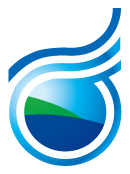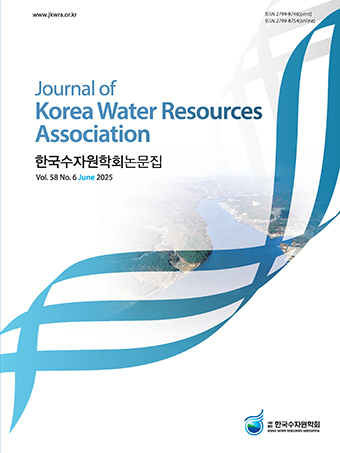Abstract
References
Beven, K. (1989). “Changing ideas in hydrology - the case of physically-based models.” Journal of Hydrology, Vol. 105, No. 1-2, pp. 157-172. Beven, K. (2002). “Towards an alternative blueprint for a physically based digitally simulated hydrologic response modelling system.” Hydrological Processes, Vol. 16, No. 2, pp. 189-206. Blenkinsop, S., and Fowler, H. J. (2007). “Changes in drought frequency, severity and duration for the Britich lsles projected by the PRUDENCE regional climate models.” Journal of Hydrology, Vol. 342, No. 1-2, pp. 50-71. Correia, F. N., Santos, M. A., and Rodrigues, R. P. (1991). “Reliability in regional drought studies.” Water Resources Engineering Risk Assessment, pp. 43-62. Dagon, S., Berktay, A., and Singh, V. P. (2012) “Comparison of multi-monthly rainfall-based drought severity indices, with application to semi-arid Konya closed basin, Turkey.” Journal of Hydrology, Vol. 470-471, pp. 255-268. Du Pisani, C. G., Fouché, H. J., and Venter, J. C. (1998). “Assessing rangeland drought in South Africa.” Agricultural Systems, Vol. 57, No. 3, pp. 367-380. Edossa, D. S., Babel, M. S., and Gupta, A. D. (2010). “Drought analysis in the Awash river basin, Ethiopia.” Water Resources Management, Vol. 24, No. 7, pp. 1441-1460. Heim, R. R. (2002). “A review of twentieth-century drought indices used in the United States.” Bulletin of the American Meteoro-logical Society, Vol. 83, No. 8, pp. 1149-1165. Jain, V. K., Pandey, R. P., Jain, M. K., and Byun, H. I. (2015). “Comparison of drought indices for appraisal of drought characteristics in the Ken river basin.” Weather and Climate Extremes, Vol. 8, pp. 1-11. Keyantash, J., and Dracup, J. (2002). “The quantification of drought: An evaluation of drought indices.” Bulletin of the American Meteorological Society, Vol. 83, No. 8, pp. 1167-1180. Kim, S. H., and Chung, E. S. (2017). “Peak drought index analysis of Cheongmicheon watershed using meterological and hydro-logical drought index.” Journal of Korea Water Resources Association, Vol. 50, No. 1, pp. 65-73. Lee, B. R., Sung, J. H., and Chung, E. S. (2015). “Comparison of meteorological drought and hydrological drought index.” Journal of Korea Water Resources Association, Vol. 48, No. 1, pp. 69-78. McKee, T. B., Doeskin, N. J., and Kleist, J. (1993). “Drought moni-toring with multiple time scales.” Proceedings 9th Conference on Applied Climatology, American Meteorological Society, pp. 233-236. Nalbantis, I. (2008). “Evaluation of a hydrological drought index.” European Water, Vol. 23, No. 24, pp. 67-77. Nalbantis, I., and Tsakiris, G. (2009). “Assessment of hydrological drought revisited.” Water Resources Management, Vol. 23, No. 5, pp. 881-897. Shiau, J.T., and Modarres, R. (2009). “Copula-based drought severity-duration-frequency analysis in Iran.” Meteorological Application, Vol. 16, No. 4, pp. 481-489. Spinoni, J., Naumann, G., Carrao, H., Barbosa, P., and Vogt, J. (2014). “World drought frequency, duration and severity for 1951-2010.” International Journal of Climatology, Vol. 34, No. 8, pp. 2792-2804. Sung, J., and Chung, E. S. (2014). “Development of stream drought severity-duration-frequency curves using the threshold level method.” Hydrology and Earth System Sciences, Vol. 18, pp. 3341-3351. Tate, E. L., and Gustard, A. (2000). “Drought definition: A hydrological perspective.” Drought and Drought Mitigation in Europe, Vol. 14, pp.23-48. Vicente-Serrano, S. M., Begueria, S., and Lopez-Moreno, J. I. (2010). “A multiscalar drought index sensitive to global warming: the standardized precipitation evapotranspiration index.” Journal of Climate, Vol. 23, No. 7, pp. 1696-1718. Vicente-Serrano, S. M., López-Moreno, J. I., Beguería, S., Lorenzo- Lacruz, J., Azorin-Molina, C., and Morán-Tejeda, E. (2011). “Accurate computation of a streamflow drought index.” Journal of Hydrologic Engineering, Vol. 17, No. 2, pp. 318-332. Wilhite, D. A., and Glantz, M. H. (1985). “Understanding: the drought phenomenon: The role of definitions.” Water International, Vol. 10, No. 3, pp. 111-120. Won, K. J., and Chung, E. S. (2016). “Drought analysis of Cheongmi-cheon watershed using meteorological, agricultural, and hydro-logical drought indices.” Journal of Korea Water Resources Association, Vol. 49, No. 6, pp. 509-518. Won, K. J., Chung, E. S., Lee, B. R., and Sung, J. H. (2016). “Characteristics of the Han river basin drought using SPEI and RDI.” Journal of Korea Water Resources Association, Vol. 49, No. 3, pp. 187-196. Won, K. J., Sung, J. H., and Chung, E. S. (2015). “Parametric assessment of water use vulnerability of South Korea using SWAT model and TOPSIS.” Journal of Korea Water Resources Association, Vol. 48, No. 8, pp. 657-657.
Information
- Publisher :KOREA WATER RESOURECES ASSOCIATION
- Publisher(Ko) :한국수자원학회
- Journal Title :Journal of Korea Water Resources Association
- Journal Title(Ko) :한국수자원학회 논문집
- Volume : 51
- No :6
- Pages :471-479
- Received Date : 2017-12-27
- Revised Date : 2018-02-06
- Accepted Date : 2018-02-28
- DOI :https://doi.org/10.3741/JKWRA.2018.51.6.471




 Journal of Korea Water Resources Association
Journal of Korea Water Resources Association










